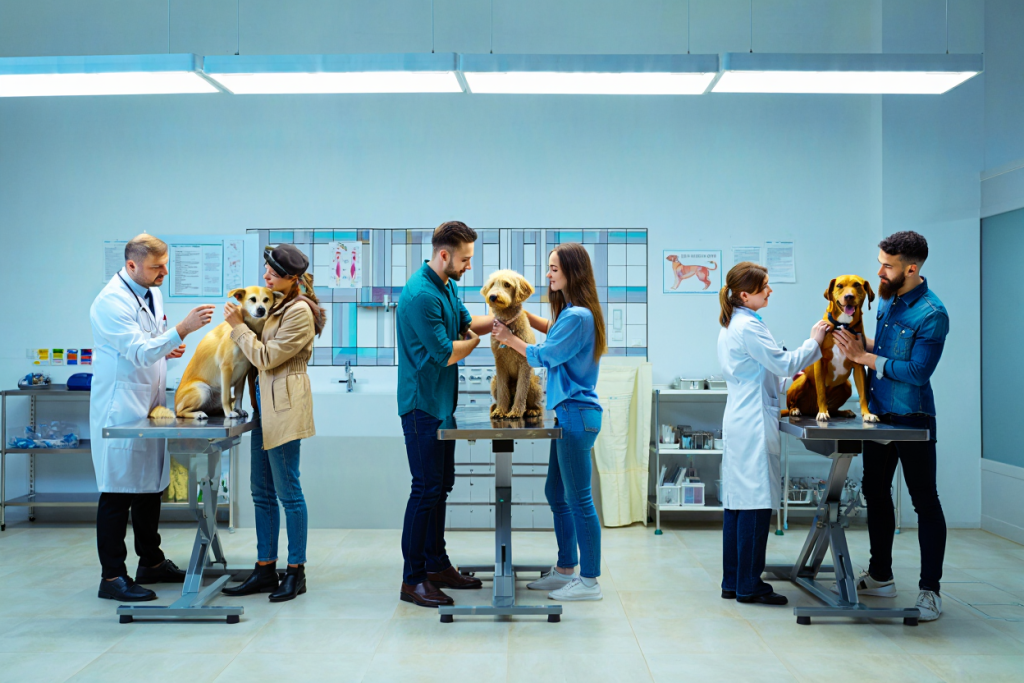There are many signs your pet can be in serious trouble, and ignoring them is not a sign of love.
Most pet parents think they know better and they are on top of things, but they often ignore sneaky red flags that could spell real trouble for your furry friend. People happily spend thousands a year on toys, treats, and stylish bandanas, but when it comes to health care, there is a serious gap. A study by MyPet.com came up with something shocking: 58% of dogs and 73% of cats haven’t had their annual jabs, and that’s not great.
Moreover, one in six owners admits the fact that they’ve lost track of vaccines and treatments, and this kind of forgetfulness can open the door to disease. Keep in mind the fact that this can cut a pet’s life short.
Yes, cuddles are cute, but keeping up with the checkups is real love.
These are the warning signs you shouldn’t ignore:

1. Bad breath
We may have had our moments when our pets came for a cuddle, and the breath hits you like a truck. We often brush it off, thinking this is how pets smell, but chronic bad smell is actually a major red flag. It points to gum disease or dental problems that, if left unchecked, can lead to infection affecting the heart or kidneys. It’s not just them aging or their pet smell; it’s their body waving a red flag.
2. Upset Stomach or Loose Stools
The one-off tummy ache may come from sneaking a weird snack. If you notice your friends have frequent digestive issues, like regular vomiting, diarrhea, or inconsistent poops, it’s time to dig deeper. This is a signal of anything from food sensitivities to parasites or chronic illnesses, such as IBD. You shouldn’t just wait for it to pass. Make sure you listen when your pet’s gut is talking.
3. Itchy Skin and Sore Patches
Is your pet scratching like they plan to follow a DJ career? Are they licking one spot obsessively? This is not normal. In spring and summer, flare-ups from allergies get really bad, really fast. But it’s not just pollen; they could react to fleas, food, or household cleaners.
When left untreated, it could turn into skin infections, raw hot spots, and worse. Plus, trust me, they hate to wear the cone of shame.

4. Behavior changes
Did your sweet cuddle buddy turn into a grump, or are there energetic sidekicks acting withdrawn? Don’t just assume they have a mood. These changes in their behavior, like hiding, snapping, or even clinginess, are one of the first signs of something not being right under the surface.
It could be pain from arthritis, hidden injuries, or internal discomfort that could be the culprit. Before you chalk it up to being moody, make sure you get your pet checked out. They don’t fake it; they try to tell you something, and this is the only way they know.
5. Skipping vaccinations
No one loves a vet appointment, but please, don’t skip your pet’s jabs. This is the biggest number. Shockingly, last year, half of the dogs and three-quarters of the cats missed their annual vaccinations. These aren’t formalities; they’re your pet’s shield against serious issues such as parvovirus, distemper, or feline leukemia. Preventing is easier and cheaper than treating, so you better not leave your fur baby vulnerable. Staying up to date is just another act of love.
6. Increased drinking
More water may make it seem like your pet is just staying hydrated. If they’re suddenly draining their bowl like it’s a frat party keg, it’s time to take it seriously. Such a big spike in thirst can only be a sign of deeper health issues, like kidney problems, hormonal imbalances, and diabetes. Cushing’s disease is especially important if it comes out of nowhere or is paired with changes like losing weight or increased urination. Check it out when in doubt, and remember your pet can’t tell you, “Hey, something’s off.” That’s why it’s your responsibility to be their voice.
7. Grass Seeds
These tiny things are the villains of summer walks. They can easily sneak into your pet’s fur, paws, ears, or eyes. The annoying part is that once they’re in, they don’t chill. They burrow, and this is something that can lead to infections, abscesses, and unhappy trips to the vet.
Make sure after every stroll in tall grass, your pet gets a once-over. Especially between the toes and around the ears, as one check now saves a whole lot of pain later.
8. Heat Hazards Beyond Cars
We know the “don’t leave your dog in the car” rule, but it keeps happening. However, heat dangers go way beyond that. Hot pavement can burn their paws, and the lack of shade in the yard or the overexertion during midday walks does no good for our furry friends.
Pets don’t sweat the same way we do, so they overheat fast. Keep in mind to test the pavement with your hand and keep walks short when it’s blazing. Give them cool spots to chill, as summer fun shouldn’t come with vet bills and suffering.
9. Ear or Eye Discharge
Have you noticed a little eye goop after a nap? That’s totally normal. However, if your pet’s eyes and ears are constantly gunky, red, or even smell a bit off, don’t ignore it.
During the high pollen months, it’s especially easy for them to chalk it up to allergies. Persistent discharge, however, can be a sign of infections or deeper irritation. If left untreated, it can lead to pain or even sensory loss, such as hearing loss or vision problems. If you’re wiping the same spot over and over, it’s time to call the vet.

10. You just feel something’s off
The gut feeling that your pet is not quite themselves? Don’t ignore it. Maybe you notice they sleep more, they are not as playful, or they are giving you a different kind of look. Whatever it is, trust your instincts. You know your pet better than anyone else, so even subtle changes can be early signs of something brewing beneath the surface. Catching it early can make the difference between a quick fix and a serious condition.
If your vibe says something’s up, make sure you call the vet. (better safe than sorry)
Pets are different. While some are dramatic, some can be stoic, so it’s crucial to be in tune with your patient, their moods, and their habits. Their baseline is so important, and tiny shifts might not seem like much. They are often the first clue that something’s not right.
A lot of the illnesses we see in pets could be prevented with a yearly checkup and staying up to date with vaccines. Vaccines aren’t just one and done, and pets need boosters to stay protected for life, just like we do.
Even if your floof seems fine, make sure you get that annual trip to the vet. It’s not just about avoiding scary illnesses but about making sure they stay happy and healthy for as long as possible. You will see, a pet with peace of mind is priceless. It can only encourage yours.
Have you considered getting a pet camera? To check their behavior when you’re not there? More and more people seem to do this, and it’s proven to be helpful in finding many health conditions just based on their different behavior noticed. If you plan on taking one, here is one with great reviews on Amazon: Kasa Indoor Pan/Tilt Smart Security Camera, 1080p HD Dog-Camera. If you already own one, let us know your experience.
Read next: 14 Common Dog Skin Conditions and How to Treat Them Efficiently
Are you looking for a vet? You can find accredited veterinarians here!












